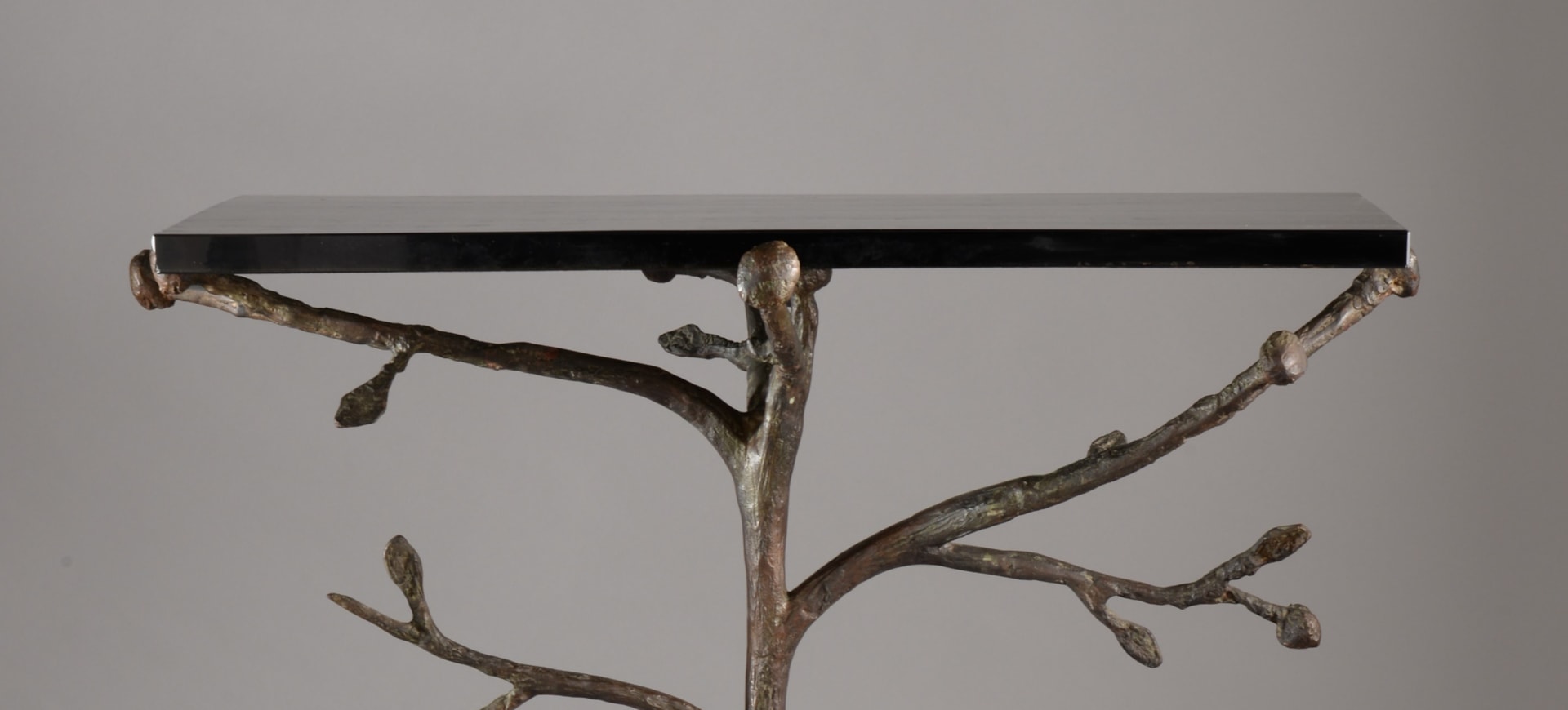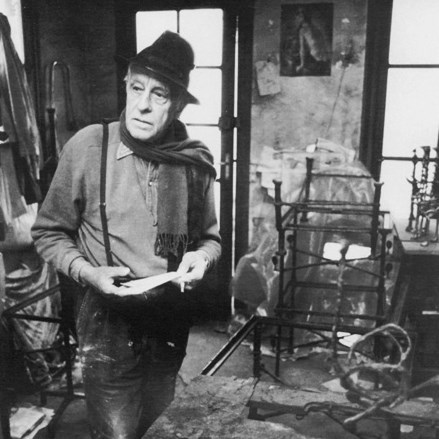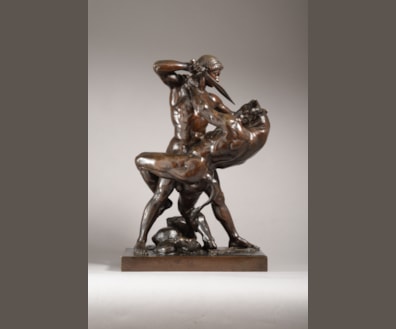
Diego GIACOMETTI
( 1902 - 1985 )
GUÉRIDON ARBRE (1964 or before)
(first version)
Bronze, black brown patina, with oxydation green traces.
H : 72 cm, L : 72 cm, D : 41 cm
Artist example unsigned as usual for early works, direct purchase at the artist studio by a business man owner of paintings by Alberto Giacometti, then by descendance.
Manufactured in 1964
Detailed Description
 Diego Giacometti was often considered as a discreet personnality, who has always lived in the shadow of his brother Alberto. Out of work in 1925, he followed the advices of his mother and came from Switzerland to Paris « We will take care of Alberto, mon son » ; they already lived together, at the 46 rue Hippolythe Maindron in 1926.
Diego Giacometti was often considered as a discreet personnality, who has always lived in the shadow of his brother Alberto. Out of work in 1925, he followed the advices of his mother and came from Switzerland to Paris « We will take care of Alberto, mon son » ; they already lived together, at the 46 rue Hippolythe Maindron in 1926.He became his intimate, the person who was always here for him, the patient model and his talented and diligent assistant preaparing the iron structures, moulding, stone and marble ... In brief, the little brother who has always seemed to be lost in his own life became quickly the stowage and the daily protector of Alberto existence.
With Diego’s help, Alberto created decorative objects for Jean Michel Franck in the 1930’s. These pieces are composed with pure lines and shapes which make them universal, lamps, lights, low reliefs ans bouquet doors, etc… At the end of this decade, Diego begun to create his own decorative objects. From those, only few pieces are known, because of the War, then because he devotated his time to help his big brother who got a worldwide prominence after 1947. During this period, Diego created two chairs for the painter-designer Christian Berard. He worked alone, considered himself as an “artisan-meublier” and got more and more commissions, mainly from Galleries and Art dealers, like Aimé Maeght, Pierre Matisse et Daniel Kahnweiller. In June 1961, he established in a house bought by his brother at 16 rue du Moulin-Vert and continued to enrich his decorative productions with furnitures, armchairs, stools, guéridons and lights.
But it is only after Alberto’s death in 1966 that his production increased, above all in his last fifteen years. He was always reluctant to sign his pieces, respecting his brother memory, in spite of the insistance of his dealer in New York, Pierre Matisse. We has signed only at the beginning of the 1970’s, few pieces, and just with the monogram DG or his firstname. Getting older, Diego got three assistants and the last will be Phillipe Anthonioz, who helped him for his last commission, maybe one of the most important, for the Picasso museum, 1983-1985.
His inspirations come from Greek, Roman and Egyptian Antiquity but he was also inspired a naturalistic influence, fully expressed in our Guéridon arbre, first version, manufactured in 1964.
THE GUERIDONS
The Guéridon-arbre (first version) which can be dated before or circa 1964[1], could follow the Guéridon bourgeon (1962) and have been created before the Guéridon arbre, second version (owl, mouse, etc.) from the 70-80’s with thiner elemnts. The Guéridon racine is the fourth of the serie for which one example is only identified in the reference documentation. At last, a Petit Guéridon arbre exists, which means that we currently know five different models. For the first version of the Guéridon arbre, three examples are currently identified, our and two others in the reference documentation. Nevertheless, approximately fourty examples of the second version from the 70-80 decade are known, with a thiner central pedestal, more branches and an animal, “élève de classe” from the Bestiary ; more decorative and less impressive, less “Alberto”. By the chiselling quality and the beautiful black brown patina with oxydation green traces, by the fine architecture of the structrue, this Guéridon arbre, première version manufactured in 1964 with the usual assembling technique[2], belongs to the first part of the production, production of excellence[3] : the «artist examples », which were produced, chiselled and patinated entirely by himself.
[1] Not circa 1978 as it was considered until now; « a posteriori », his style corresponds to the period of the 1960’s (strong branches, simple composition).
[2] In his creative process, Diego joins the essential componants by welding them, which allows to create assembling variations. The elements are cast with the sand cast technique ; the assembling and the chiselling are then controlled by him as the patina, in which he was excellent, known as « l’As des patines ». He continues the « Artiste-Artisan » tradition after, Barye et Fratin, his precedators from the last century. The pointing of the welding joints on our Guéridon presents the production process.
[3] After that, some wrote : « Inhérent au bronze, la patine lui confère sa nuance, sa vibration et sa profondeur. Comme la lumière qui s’y accroche, elle anime la surface de l’objet ; Diego les aime dorée, brune ou noir ; plus tardivement vert-jade. Celle-ci caractéristique des dernières années de sa vie a à nos yeux moins d’attrait. Perdant progressivement la vue et la sensibilité aux couleurs, il ne peut retrouver la qualité d’antan ; la matière, autrefois épaisse et riche se fait plus incertaine, le bronze moins tactile » (C. Boutonnet & R. Ortiz, Giacometti DIEGO, Paris, Éditions de l’Amateur, Galerie Arc en Seine, 2003, page 136)
You may also like








